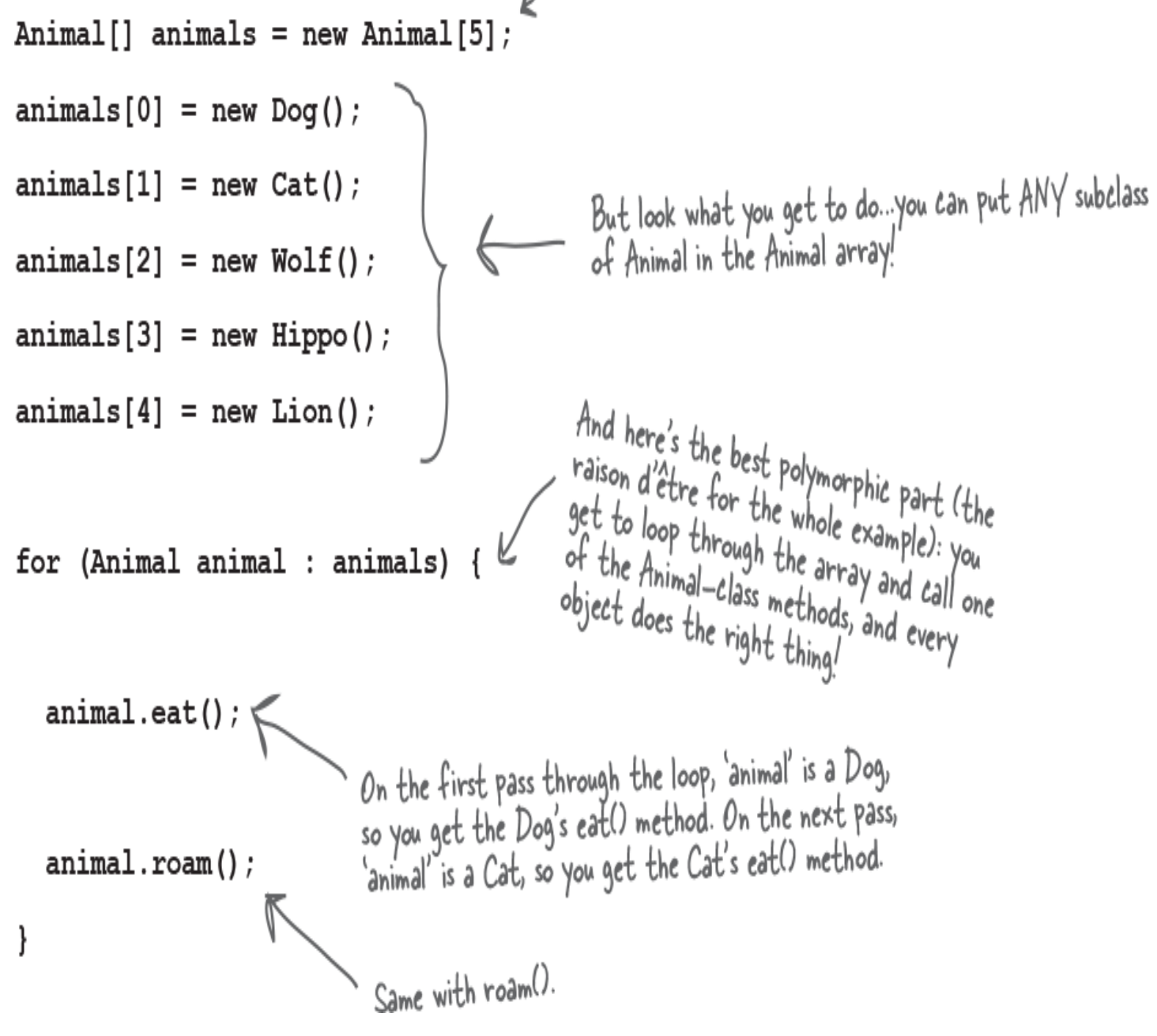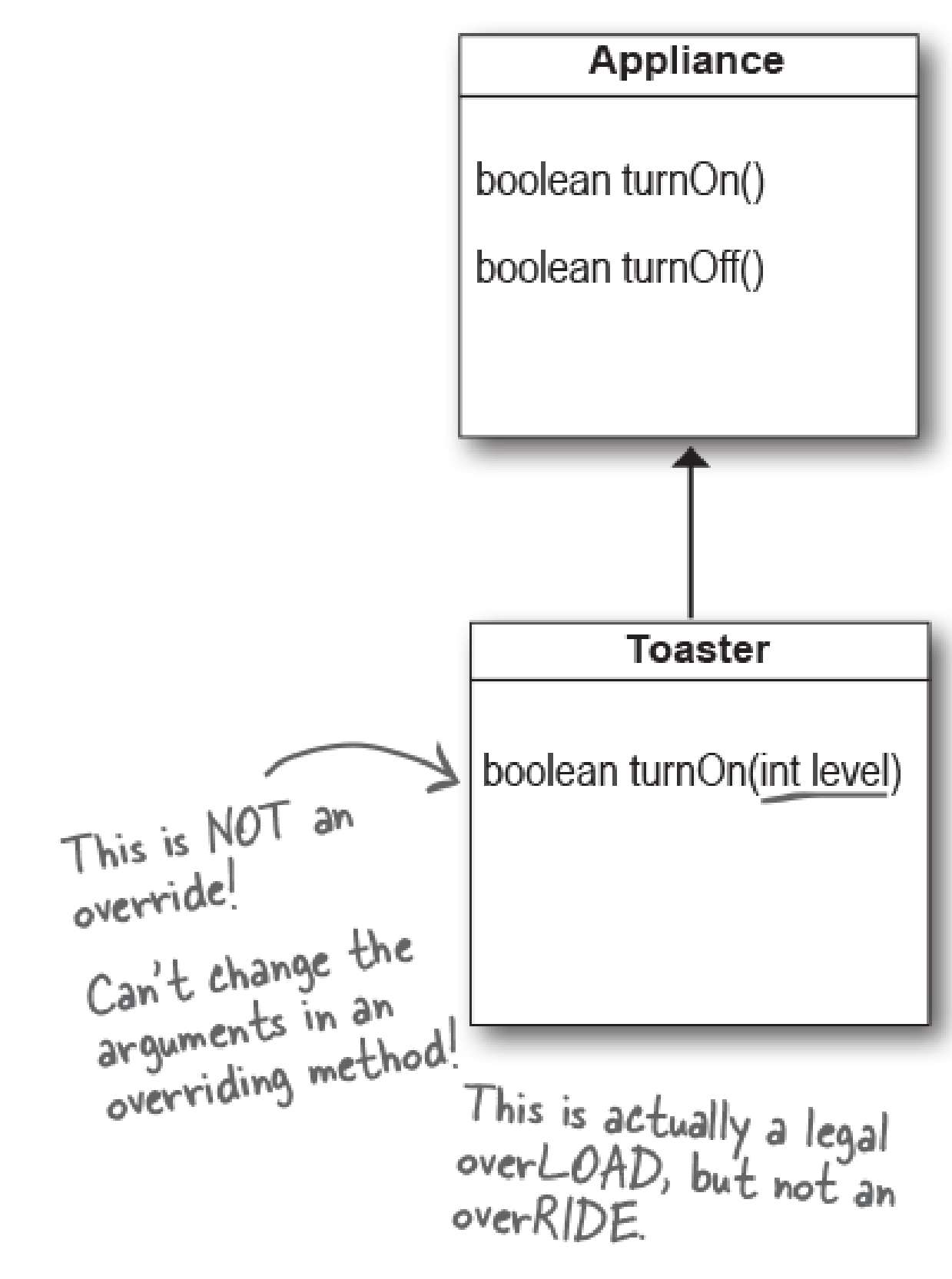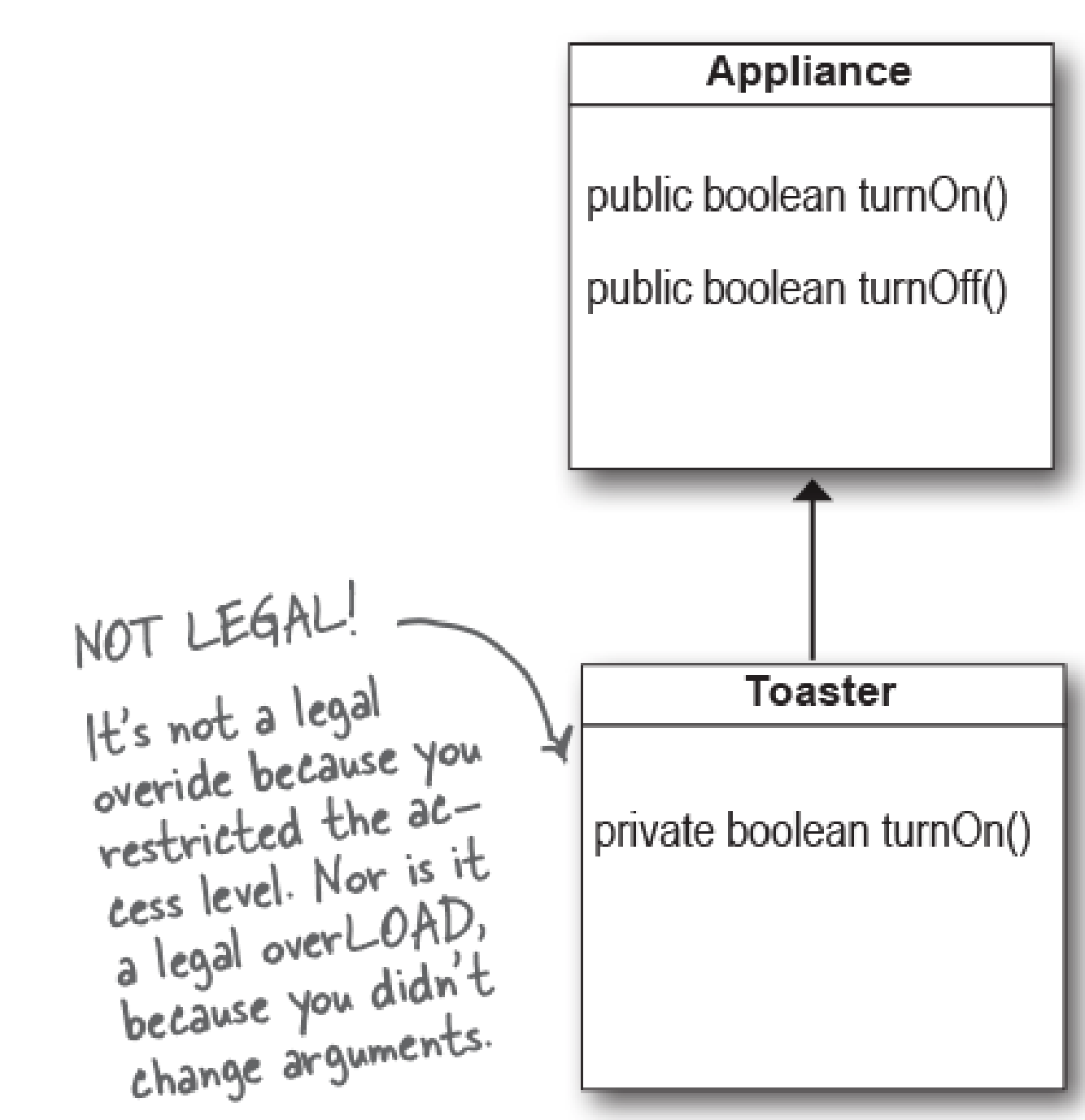Polymorphism
Java
Polymorphism:
Introduction
Let’s first step back and look at how we declare a reference and create an object:
//1) declare reference variable
// Tells the JVM to allocate space for a reference variable. The reference
//variable is, forever, of type Dog. In other words, a remote control that
//has buttons to control a Dog, but not a Cat or a Button or a Socket.
Dog bitch = new Dog();
//2) create object
// Tells the JVM to allocate space for a new Dog object on the garbage
// collectible heap
Dog bitch = new Dog();
//3) Link the object and reference
// Assigns the new Dog to the reference variable myDog. In other words,
program the remote control.
Dog bitch = new Dog();
Important note is that reference type AND the object type are the same. In this case, both are type Dog.
Here comes polymorphism
However, with polymorphism, the reference type and the object type can be different.
Animal bitch = new Dog();
Here, reference variable type is Animal but the object created is Dog.
When you declare a reference variable, any object that passes the IS-A test for the type of the reference can be assigned to that variable. In other words, anything that extends the declared reference variable type can be assigned to the reference variable. This lets you do things like make polymorphic arrays.

Polymorphic arguments(to a method) and return types
You can also have polymorphic arguments and return types.
If you can declare a reference variable of a supertype, say, Animal, and assign a subclass object to it, say, Dog, think of how that might work when that reference is an argument to a method…

3 ways to prevent a class from being subclassed
1) Although there is no such things as private class, a class can be non-public (what you get if you don’t declare the class as public). A non-public class can be subclassed only by classes in the same package as the class. Classes in a different package won’t be able to subclass (or even use, for that matter) the non-public class. 2) Through keyword modifier final. A final class means that it’s the end of the inheritance line. Nobody, ever, can extend a final class. 3) if a class has only private constructors
A note on keyword final is that typically, you won’t make your classes final. But if you need security —the security of knowing that the methods will always work the way that you wrote them (because they can’t be overridden), a final class will give you that. A lot of classes in the Java API are final for that reason. The String class, for example, is final because, well, imagine the havoc if somebody came along and changed the way Strings behave!
If you want to protect a specific method from being overridden, mark the method with the final modifier. Mark the whole class as final if you want to guarantee that none of the methods in that class will ever be overridden.
Common mistakes with poly

1) Arguments must be the same, and return types must be compatible.
The contract of superclass defines how other code can use a method. Whatever the superclass takes as an argument, the subclass overriding the method must use that same argument. And whatever the superclass declares as a return type, the overriding method must declare either the same type or a subclass type. Remember, a subclass object is guaranteed to be able to do anything its superclass declares, so it’s safe to return a subclass where the superclass is expected.

2) The method can’t be less accessible.
That means the access level must be the same, or friendlier. You can’t, for example, override a public method and make it private.